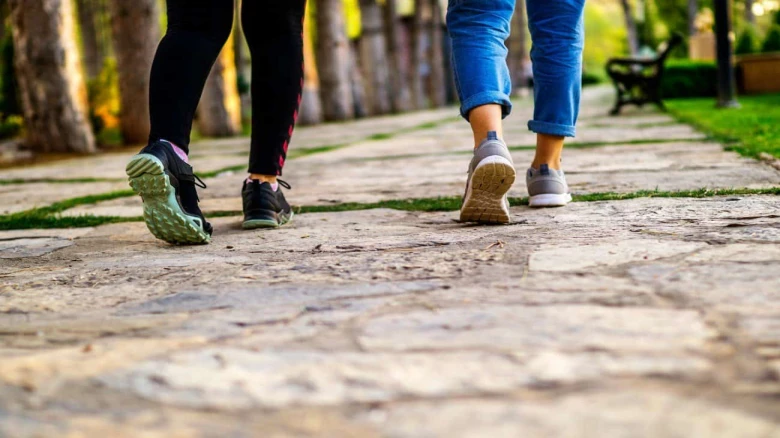National

Reverse walking can help you burn more calories than usual walking since it puts greater strain on your muscles...
Digital Desk: Walking is a simple cardio exercise that helps keep you stay active. However, you might be shocked to learn that walking backwards has advantages. Reverse walking can help you develop strength and flexibility by putting your body to unusual physical demands.
It's not a smart idea to keep moving backwards all day. However, it might be beneficial to include reverse walking in your exercise routine
Here are some benefits of walking backwards:
According to researchers, your ankle provides the forward thrust or power when you walk normally. The power for backward walking comes from the knees and hips. This change gives a lot of advantages, such as:
1. Builds muscle strength
Your gait, or pattern of walking, is heel-to-toe. Your heel thus strikes the ground first with each step, followed by your toes. In contrast, reverse walking is an alternate. Before your heel touches the earth, your toes do. Your hip and leg muscles begin to function differently as a result.
It has been demonstrated that walking backwards, often known as retro walking, puts more strain on your legs than going ahead. For instance, to straighten your legs and move backwards when walking, you would use the quadriceps muscles in the front of your thighs. This can strengthen your lower body muscles. According to studies, walking backwards strengthens the quadriceps more than walking forward.
2. Improves balance and gait
Especially after an accident or illness, walking backwards can help with balance, stride, and walking speed. One study discovered that retro walking helped persons with knee osteoarthritis, juvenile rheumatoid arthritis, and ACL injuries improve their gait and muscular strength when paired with other physical therapy treatments.
Another study looked at a reverse walking exercise regimen for stroke victims. Compared to standing balance training, it enhanced balance and walking speed. The results of a more recent investigation were comparable. Three times each week, for 30 minutes, stroke patients walked backwards on a treadmill. In just four weeks, their balance, walking speed, and cardiorespiratory fitness had all improved.
3. Burns more calories than forward walking
Reverse walking can help you burn more calories than usual walking since it puts greater strain on your muscles. According to the American College of Sports Medicine (ACSM), brisk walking at 3.5 miles per hour burns 4.3 metabolic equivalents (METs). On the other hand, walking backwards burns 6.0 METs.
A MET calculates the amount of energy your body expends when exercising. The amount of oxygen you consume while at rest, for instance, equals one MET. In other words, backward walking burns around 40% more calories per minute than fast walking, according to the ACSM. This is a fantastic technique to increase the difficulty of your workouts.
4. Boosts cardiorespiratory fitness
Walking is a great cardio exercise that can improve the condition of your heart and lungs. Changing course also works well. Your cardiorespiratory fitness can be improved by reverse walking, enabling your heart and lungs to deliver oxygen more effectively as you exercise.
5. Increases flexibility and range of motion
Retro walking alters your usual gait, which may increase your range of motion and flexibility while easing aches and pains. Before your foot touches the ground as you take a step back, your knee straightens. If you find it difficult to fully extend your knee as a result of an injury or sickness, performing this action repeatedly can increase your range of motion. Additionally, it can increase flexibility in the hamstrings and ankles in the back of the thigh.
Leave A Comment